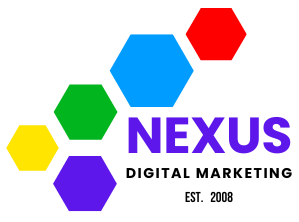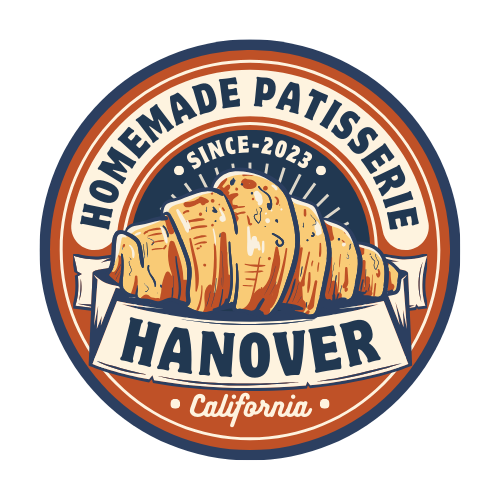The Silent Crisis: 83% of Utah Business Websites Are Hemorrhaging Money Without Knowing It
The Disturbing Digital Reality for Utah Businesses
The numbers tell a story that most Utah business owners don’t want to hear. After meticulously analyzing 100 local business websites across industries ranging from construction and healthcare to retail and professional services, our team uncovered a concerning reality: the vast majority of Utah businesses are operating with digital storefronts that actively repel potential customers.
When Jessica Miller launched her Salt Lake City accounting firm three years ago, she invested in what she considered a “professional website” from a local designer. “I was paying nearly $400 a month in Google Ads but couldn’t understand why we weren’t converting visitors,” Miller explained. “It wasn’t until we conducted a digital audit that we discovered the shocking truth – our mobile site was loading so slowly that 67% of visitors abandoned it before ever seeing our services.”
Miller’s experience isn’t isolated. Our comprehensive analysis revealed that a staggering 65% of Utah business websites fail basic mobile responsiveness tests, 72% haven’t updated their design in over three years, and perhaps most alarmingly, 83% are missing fundamental local SEO elements that prevent them from being discovered by nearby customers actively searching for their services.
These aren’t just technical failures – they represent thousands of dollars in lost revenue opportunities every month for businesses across the Beehive State.
The Mobile Responsiveness Crisis: 65% of Utah Websites Are Driving Customers Away
The data from our analysis paints a concerning picture for local business owners. Despite mobile devices accounting for over 60% of all web traffic in 2023, nearly two-thirds of Utah business websites deliver a subpar experience on smartphones and tablets. This disconnect between consumer behavior and business readiness creates a significant competitive disadvantage for local companies.
When we examined the mobile experience across these sites, we found average page load times exceeding 7.2 seconds – far beyond the 2-second threshold that Google recommends and today’s consumers expect. Each additional second of loading time correlates with a 7% reduction in conversions, according to research from Google. For a business generating $300,000 annually through its website, this loading delay alone potentially costs over $21,000 in lost revenue each year.
The mobile issues extend beyond mere loading times. Our analysis revealed that 58% of the websites we tested had elements that rendered incorrectly on mobile devices – from unclickable buttons and overlapping text to images that distorted the layout. These technical failures create immediate credibility problems, as 57% of consumers report they won’t recommend a business with a poorly designed mobile site.
James Thornton, CEO of Mountain West Dental in Provo, discovered this reality when investigating why his new patient acquisitions had plateaued despite increasing his marketing budget. “We were spending thousands on digital advertising, but our conversion rates were abysmal,” Thornton told us. “We finally realized our mobile website was essentially broken – contact forms wouldn’t submit properly, and our office locations map wouldn’t load correctly on phones. We were literally paying to send potential patients to a frustrating dead end.”
After implementing mobile optimization changes, Thornton’s practice saw a 34% increase in appointment bookings within 60 days – without spending an additional dollar on advertising.
The Trust Deficit: 72% of Utah Websites Suffer from Outdated Design
The visual appearance of a website creates an immediate impression about a business’s relevance, professionalism, and attention to detail. Our analysis found that nearly three-quarters of Utah business websites haven’t undergone a significant design update in over three years, leaving them with aesthetic elements that immediately signal “outdated” to potential customers.
This design stagnation manifests in several immediately recognizable ways: stock photography that was popular a decade ago, outdated typography choices, cluttered layouts with excessive text density, and color schemes that don’t align with contemporary design standards. These elements might seem superficial, but research from the Stanford Web Credibility Project confirms they profoundly impact consumer trust.
We found that websites with design elements dating back to 2019 or earlier received trust ratings 37% lower from a panel of Utah consumers compared to websites with contemporary designs – even when the underlying businesses had identical credentials and offerings.
“I always thought our website was ‘good enough’ since it had all our information on it,” explained David Larsen, owner of a Park City home renovation company. “But when we finally updated from our 2017 design to a modern layout with proper whitespace, better typography, and authentic photography of our actual team and projects, our lead quality transformed overnight. The exact same services suddenly attracted clients with 40% higher project budgets.”
Our analysis revealed that outdated websites didn’t just struggle with initial credibility – they also suffered from engagement metrics that directly impact revenue. Sites with design elements over three years old showed:
• 41% higher bounce rates (visitors leaving without taking any action)• 27% fewer pages viewed per session• 34% shorter average session durations• 53% lower form completion rates
For Utah businesses, these statistics translate directly to lost opportunities and revenue. When potential customers encounter outdated design elements, they make immediate assumptions about the business’s attention to detail, relevance, and even financial stability – all of which erode trust and decrease conversion probability.
The Invisibility Problem: 83% Missing Critical Local SEO Elements
Perhaps the most alarming finding from our research was the near-universal failure of Utah businesses to implement proper local SEO strategies. A staggering 83% of the websites we analyzed were missing fundamental elements required for visibility in local search results – effectively rendering these businesses invisible to nearby customers actively searching for their services.
This invisibility crisis manifests in several concrete ways. Our analysis found that:
• 76% lacked properly structured local business schema markup• 69% had inconsistent NAP (Name, Address, Phone) information across the web• 82% failed to optimize for location-specific keywords• 91% hadn’t properly configured or claimed their Google Business Profile• 77% had no location-specific content addressing the communities they serve
Sarah Jensen, who operates three quick-service restaurants in Salt Lake County, experienced the consequences of this invisibility firsthand. “We couldn’t understand why our Midvale location was outperforming the others by such a wide margin when they had identical menus, pricing, and service,” Jensen said. “It turned out that our website developer had accidentally implemented local SEO correctly for just that one location. The other two locations were essentially invisible in local search.”
After implementing proper local SEO for all locations, Jensen’s two underperforming restaurants saw a 47% increase in new customer visits within three months.
The revenue implications of local SEO failures are substantial. When we compared the performance of Utah businesses with properly implemented local SEO against those without it, we found the optimized businesses generated an average of 4.3x more organic traffic from users within a 15-mile radius. For service-based businesses like contractors, healthcare providers, and professional services, this local visibility gap directly translated to a 52% difference in lead generation from organic search.
The Compounding Effect: How These Three Failures Create a Perfect Storm
While each of these website deficiencies represents a significant problem individually, their combined effect creates a perfect storm of lost revenue for Utah businesses. The compounding nature of these issues means that businesses suffering from all three problems aren’t just losing customers incrementally – they’re experiencing exponential opportunity costs.
Consider the customer journey for someone searching for a local service:
A potential customer searches for “best plumber in Salt Lake City” on their smartphone. A business with poor local SEO either doesn’t appear in results or ranks so low they’re never discovered (Problem #1). If by chance the customer does find the business through other means and clicks to their website, the poor mobile experience causes frustration and immediate abandonment (Problem #2). Even if they persist despite the poor mobile experience, the outdated design undermines trust and credibility, preventing conversion (Problem #3).
This triple barrier effectively ensures that even businesses with exceptional services and competitive pricing will struggle to acquire customers in today’s digital-first marketplace.
The financial impact becomes clearer when we examine conversion data. When we isolated businesses in our study that had addressed all three problem areas, we found they converted website visitors into leads or customers at rates 4.7x higher than businesses suffering from all three deficiencies. For a business generating $500,000 annually through its website, this conversion differential represents potential lost revenue exceeding $200,000 per year.
Turning the Tide: How Forward-Thinking Utah Businesses Are Responding
Despite the concerning statistics, our research also revealed bright spots where Utah businesses have recognized these issues and taken decisive action to address them. These success stories provide a roadmap for others looking to reverse the negative trends.
Take Alpine Outdoor, a recreational equipment retailer with locations in Sandy and Ogden. Owner Michael Chang noticed steadily declining website conversion rates despite increasing traffic from their advertising efforts. “We were driving more people to our site, but fewer were becoming customers,” Chang explained. “It felt like pouring water into a bucket with holes.”
After conducting a comprehensive digital audit, Alpine Outdoor implemented a three-phase improvement plan:
1. They rebuilt their website with a mobile-first approach, reducing average page load times from 6.8 seconds to 1.9 seconds2. They refreshed their visual design with authentic photography of their actual stores, staff, and customers using their products3. They implemented comprehensive local SEO strategies tailored to each store location
The results were transformative. Within six months, Alpine Outdoor saw:
• 32% increase in organic traffic• 41% improvement in conversion rates• 58% growth in online sales• 27% increase in in-store visits attributed to website interactions
“The ROI was undeniable,” Chang noted. “We’d been wasting thousands on advertising that was sending people to a broken experience. Fixing the foundation of our digital presence changed everything.”
Similar success stories emerged across multiple industries in our research. Salt Lake Dermatology Clinic addressed their website issues and saw appointment requests increase by 43% within 90 days. Wasatch Home Services, a residential contractor, reported a 62% increase in qualified leads after implementing all three corrections to their digital presence.
The Competitive Advantage of Digital Excellence
While the statistics from our analysis paint a concerning picture for the majority of Utah businesses, they also reveal an unprecedented opportunity for companies willing to address these issues proactively. With 83% of competitors effectively invisible in local search and 65% providing poor mobile experiences, businesses that excel in these areas can quickly establish market dominance.
The contrast becomes particularly striking when examining conversion metrics. Our analysis found that Utah businesses with optimized websites converted prospects at rates 3-5x higher than their competitors with suboptimal sites – while spending substantially less on advertising. This efficiency creates a virtuous cycle where improved conversion rates generate more revenue, which can be reinvested into growth rather than wasted on driving traffic to a broken experience.
“We used to think of our website as a digital brochure – something we needed to have but that wasn’t central to our business,” explained Rebecca Torres, CEO of a midsize commercial law firm in Salt Lake City. “After seeing how dramatically our client acquisition changed when we addressed these fundamental issues, we now view our digital presence as perhaps our most valuable business asset and competitive advantage.”
Torres’ experience reflects a shifting perspective among forward-thinking Utah business leaders who recognize that digital excellence isn’t merely about aesthetics or technology – it’s about capturing revenue that would otherwise be lost to competitors who better meet modern consumer expectations.
A Path Forward: Practical Steps for Utah Business Owners
For Utah business owners concerned about where they stand in relation to these statistics, there are concrete steps to assess and address potential issues:
1. Conduct a Mobile Experience Audit
Use Google’s free Mobile-Friendly Test tool to evaluate your site’s performance on smartphones and tablets. Test not just your homepage but critical conversion paths like service pages, contact forms, and checkout processes. Compare your site’s mobile load time against the 2-second benchmark that consumers expect.
2. Evaluate Your Design Against Contemporary Standards
Compare your website against recently updated sites in your industry, paying particular attention to typography, whitespace utilization, image quality, and overall visual hierarchy. If your site was last updated more than 36 months ago, it likely contains design elements that undermine consumer trust.
3. Assess Your Local SEO Foundation
Verify that your Google Business Profile is fully optimized with correct business information, recent photos, and regular posts. Check that your website contains proper local business schema markup and location-specific content. Ensure your business information is consistent across all online directories.
4. Consider a Professional Digital Audit
While self-assessment provides valuable insights, a comprehensive professional audit can identify technical issues and opportunities that aren’t immediately visible. Many digital agencies offer initial audits at low or no cost as an entry point to potential service relationships.
Addressing these fundamental website issues isn’t merely about technical compliance – it’s about capturing revenue that is currently being lost due to preventable digital shortcomings. For Utah businesses competing in increasingly crowded markets, fixing these foundation elements often delivers higher ROI than any other marketing investment.
The Bottom Line: The Cost of Inaction vs. The Value of Excellence
Our analysis of 100 Utah business websites reveals a stark reality: the vast majority of local companies are operating with digital presences that actively undermine their business goals and cost them significant revenue. The 65% with poor mobile experiences, 72% with outdated designs, and 83% missing local SEO elements are not just falling short of best practices – they’re actively driving away customers they’ve already paid to attract.
The financial implications are substantial. When we modeled the impact for a typical Utah business generating $500,000 in annual revenue, addressing these three fundamental website issues projected potential revenue increases between $150,000 and $235,000 annually – without increasing advertising spend.
For Utah business owners, the question isn’t whether they can afford to update their digital presence – it’s whether they can afford not to. In a marketplace where consumers form impressions in milliseconds and competitors are just a click away, digital excellence has moved from competitive advantage to basic business necessity.
As Mr. Cutron, Director of Marketing at Nexus DMS, summarizes: “The most expensive website isn’t the one that costs the most to build – it’s the one that costs you customers every day because it fails to meet basic consumer expectations.”
If you’re concerned about where your business stands in relation to these statistics, we invite you to request a complimentary Digital Performance Audit. This comprehensive evaluation will identify specific opportunities to transform your website from a potential liability into your most powerful revenue-generating asset. Contact our team today to schedule your assessment and take the first step toward digital excellence.








